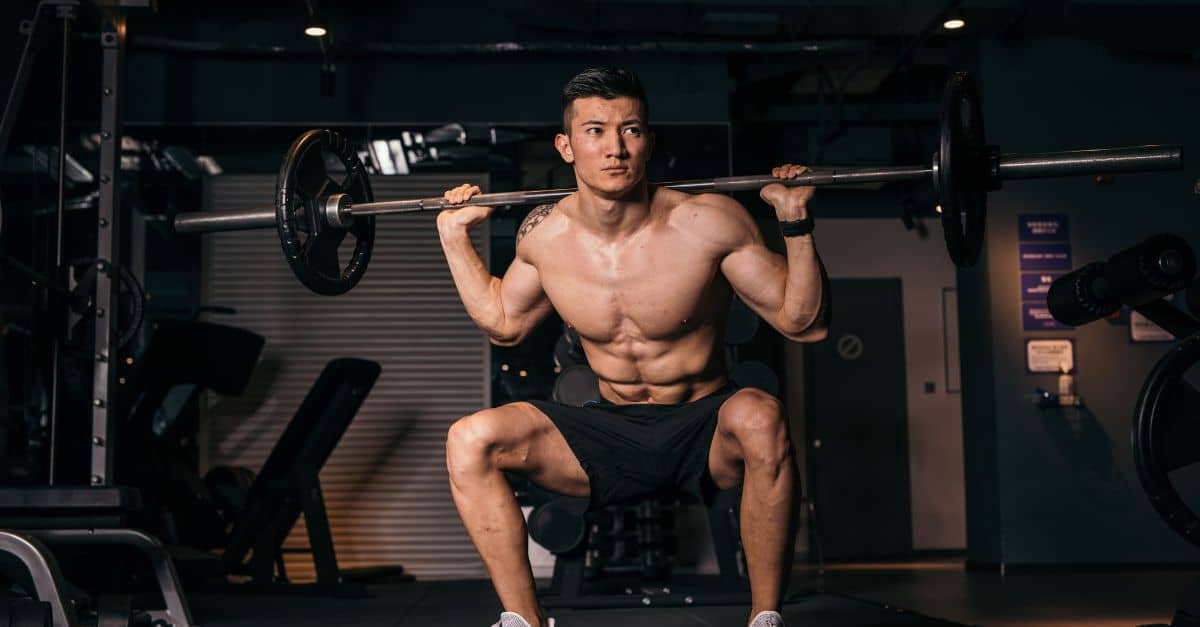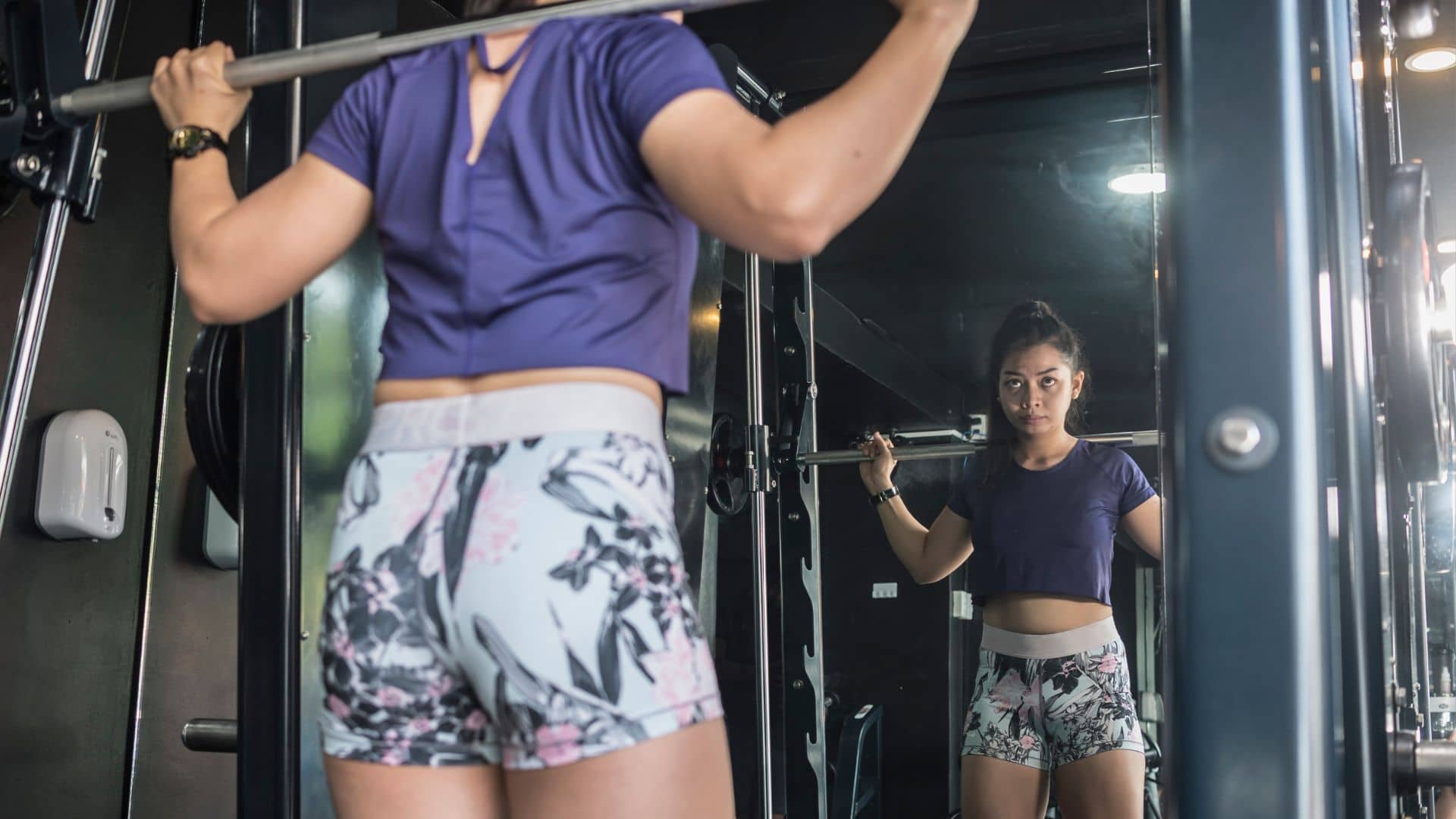In the realm of strength training and weightlifting, finding the perfect balance between exercises can be a challenging task. One common dilemma that many fitness enthusiasts face is the apparent disparity between their squat and deadlift performance. If you’ve found yourself in this situation, wondering whether you should prioritize squats over deadlifts or vice versa, you’re in the right place. In this comprehensive guide, we’ll explore the nuances of squats and deadlifts, delve into the reasons behind the performance gap, and offer solutions to help you enhance your leg strength effectively. So, let’s embark on this fitness journey and uncover the secrets to improving your squat and deadlift.
Understanding Squats and Deadlifts: Before we delve into the specifics of your squat and deadlift, let’s start by understanding these two fundamental exercises.
Squats: The Foundation of Leg Strength
Squats are often referred to as the king of leg exercises, and for good reason. They engage a wide range of muscles, including the quadriceps, hamstrings, glutes, and lower back. Squats come in various forms, such as back squats, front squats, and goblet squats, each targeting slightly different muscle groups. A proper squat is performed by bending at the hips and knees while maintaining a straight back, and it’s crucial for building overall leg strength and power.
Deadlifts: A Total Body Workout
Deadlifts are another compound exercise that primarily targets the posterior chain, including the lower back, glutes, hamstrings, and the muscles of the upper back. This exercise involves lifting a barbell or other weighted object from the ground to a standing position. It’s not just a leg exercise; it’s a full-body workout that also engages your grip strength and core muscles.
Identifying the Disparity: It’s not uncommon for individuals to notice a difference in their squat and deadlift performance.
There are several factors that may contribute to this gap:
- Leverage and Body Mechanics: Your individual body mechanics play a significant role in your squat and deadlift performance. Some people have a natural advantage when it comes to one of these exercises due to their limb lengths, joint angles, and overall body proportions.
- Technique and Form: Proper form is critical for both squats and deadlifts. If you have better technique in one exercise than the other, it can lead to a performance imbalance.
- Muscle Imbalances: Weaknesses or imbalances in specific muscle groups can affect your squat and deadlift. For example, weak quadriceps can hinder your squats, while weak hamstrings and glutes can impact your deadlifts.
- Training History: Your training history and the frequency at which you’ve performed these exercises can also impact your performance. If you’ve focused more on deadlifts in the past, your squat may lag behind.
Should You Focus on Squats on Leg Days? Now that we’ve identified the factors contributing to the disparity between your squat and deadlift, the question remains: should you prioritize squats on your leg days and possibly forgo deadlifts? The answer depends on your specific goals, body mechanics, and any existing muscle imbalances.

Scenario 1: Prioritizing Squats
Pros of Prioritizing Squats:
- Improved Squat Strength: Focusing on squats can lead to significant improvements in your squat strength over time.
- Muscle Balance: If your goal is to achieve a more balanced leg development, prioritizing squats can help address muscle imbalances.
Cons of Prioritizing Squats:
- Potential Neglect of Deadlift Benefits: By forgoing deadlifts, you might miss out on the benefits they offer, including total body engagement and grip strength development.
Scenario 2: Balancing Squats and Deadlifts
Pros of Balancing Squats and Deadlifts:
- Overall Strength and Power: Incorporating both squats and deadlifts into your routine can contribute to a well-rounded strength and power development.
- Reduced Risk of Overuse Injuries: By diversifying your exercises, you can reduce the risk of overuse injuries associated with doing a single exercise too frequently.
Cons of Balancing Squats and Deadlifts:
- Slower Progress in Squats: If you have a significant gap between your squat and deadlift, balancing them may result in slower progress for your squat.
Scenario 3: Prioritizing Deadlifts
Pros of Prioritizing Deadlifts:
- Improved Deadlift Strength: If your primary goal is to boost your deadlift performance, focusing on deadlifts can lead to substantial gains.
- Total Body Engagement: Deadlifts provide a unique full-body workout that can enhance strength, muscle mass, and overall athleticism.
Cons of Prioritizing Deadlifts:
- Potential Neglect of Squat Benefits: By neglecting squats, you might miss out on the benefits of quadriceps and anterior chain development.
Making the Decision: The best approach for you depends on your specific goals and the factors contributing to the disparity between your squat and deadlift. Here are some guidelines to help you make an informed decision:
- Assess Your Goals: Determine whether your primary goal is to improve your squat, deadlift, or achieve a balanced leg development. Your goals will influence your exercise selection.
- Address Weaknesses: Identify and address any muscle imbalances or weaknesses that may be affecting your squat and deadlift. Incorporate accessory exercises to target these areas.
- Work on Technique: Ensure that your technique and form for both squats and deadlifts are sound. Consider seeking guidance from a coach or experienced lifter to fine-tune your form.
- Periodization: Implement periodization in your training program. You can focus on squats for a certain phase and then switch to deadlifts in another, gradually working on balancing the two.
- Listen to Your Body: Pay attention to how your body responds to different training approaches. If you experience pain or discomfort, adjust your routine accordingly.
Sample Leg Day Routine
To help you get started, here’s a sample leg day routine that balances squats and deadlifts while addressing muscle imbalances.
Exercise 1: Back Squats
- 4 sets of 6-8 repetitions
- Focus on proper form and gradually increase the weight over time.
Exercise 2: Romanian Deadlifts
- 3 sets of 8-10 repetitions
- Emphasize the eccentric (lowering) phase to target the hamstrings and glutes.
Exercise 3: Bulgarian Split Squats
- 3 sets of 10-12 repetitions per leg
- Use this exercise to address any imbalances and enhance quadriceps strength.
Exercise 4: Deadlifts (Optional)
- 3 sets of 5-7 repetitions
- Include deadlifts if you feel that they are essential to your training goals.
Conclusion:
In the eternal quest for strength and muscle development, the question of whether to prioritize squats or deadlifts on your leg days is a common one. The key to achieving your fitness goals lies in understanding your individual needs, addressing any muscle imbalances, and making an informed decision based on your objectives. Whether you choose to focus on squats, deadlifts, or strike a balance between the two, remember that consistency and gradual progress are your allies on this journey. So, lace up your lifting shoes, hit the gym, and watch your leg strength soar as you master the art of squats and deadlifts.
A comparison tabular on this
| Aspect | Prioritizing Squats | Balancing Squats and Deadlifts | Prioritizing Deadlifts |
|---|---|---|---|
| Goals | Improve squat strength | Balanced leg development | Enhance deadlift performance |
| Pros | – Improved squat strength | – Overall strength and power | – Improved deadlift strength |
| – Address muscle imbalances | – Reduced risk of overuse | – Total body engagement | |
| injuries | |||
| Cons | – Potential neglect of | – Slower progress in squats | – Potential neglect of |
| deadlift benefits | squat benefits | ||
| Recommendation | Suitable for those primarily | Ideal for most individuals | Ideal for those aiming to |
| focused on squat improvement | seeking balanced leg strength | boost deadlift performance |
This table provides a quick overview of the pros and cons of each scenario, helping you make an informed decision based on your fitness goals and individual needs.
Final words
In your quest to maximize your leg strength and balance your squat and deadlift performance, the choice between prioritizing squats, finding a balance, or emphasizing deadlifts on your leg days is a personal one. Your decision should align with your specific goals, body mechanics, and any muscle imbalances you may need to address.
Remember that there is no one-size-fits-all solution, and what works best for you may differ from someone else’s approach. Whether you choose to focus on squats, balance both exercises, or prioritize deadlifts, consistency and patience are key. Over time, you’ll see improvements in both your squat and deadlift, leading to a stronger and more balanced lower body.
Whichever path you choose, always prioritize proper form and technique, address weaknesses, and adjust your training program as needed. Listen to your body, seek guidance when necessary, and stay committed to your fitness journey.
So, lace up your training shoes, hit the gym, and work towards mastering the art of squats and deadlifts. Your stronger, more balanced lower body awaits. Good luck on your fitness journey!
External Resources:
- Muscle Imbalances and How to Correct Them – Explore how to identify and correct muscle imbalances to improve your squat and deadlift performance.

Hey there, it’s Mike Rrsq, the Editor-in-Chief over at Jsquat.com, and I’m absolutely obsessed with all things squat fitness! I’ve been lucky enough to get some serious recognition for my work in this field. With a solid background in the fitness and wellness industry, I’ve been there right from the get-go, helping shape this website into what it is today.
You see, I’m not just the boss around here; I’m also a passionate contributor. I love sharing my insights through my articles, and trust me, they’re not your run-of-the-mill stuff. Each piece I write is a labor of love, filled with my expertise and real-world experience in the fitness universe. So, if you’re into fitness and looking for some inspiration, you’re in the right place!


